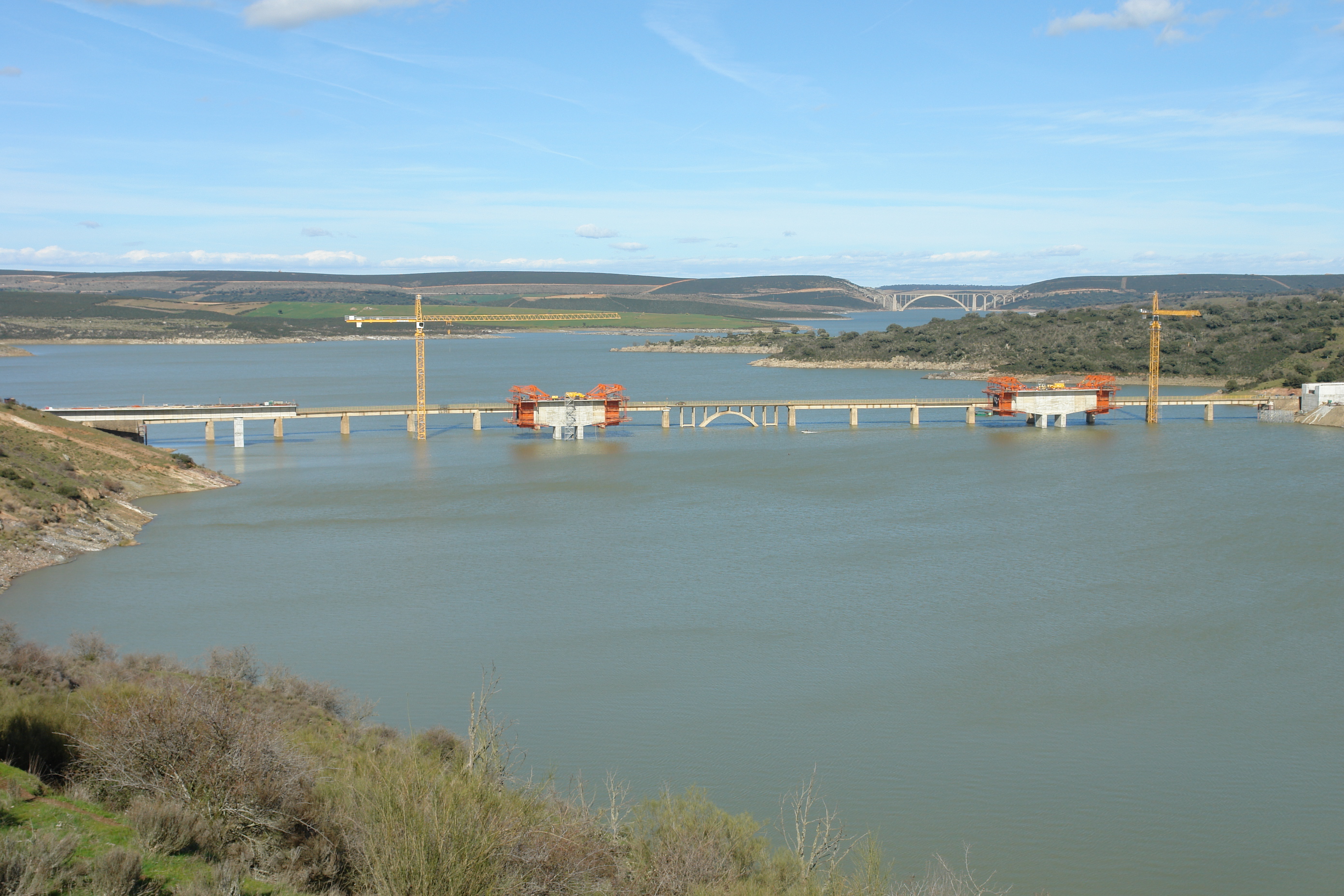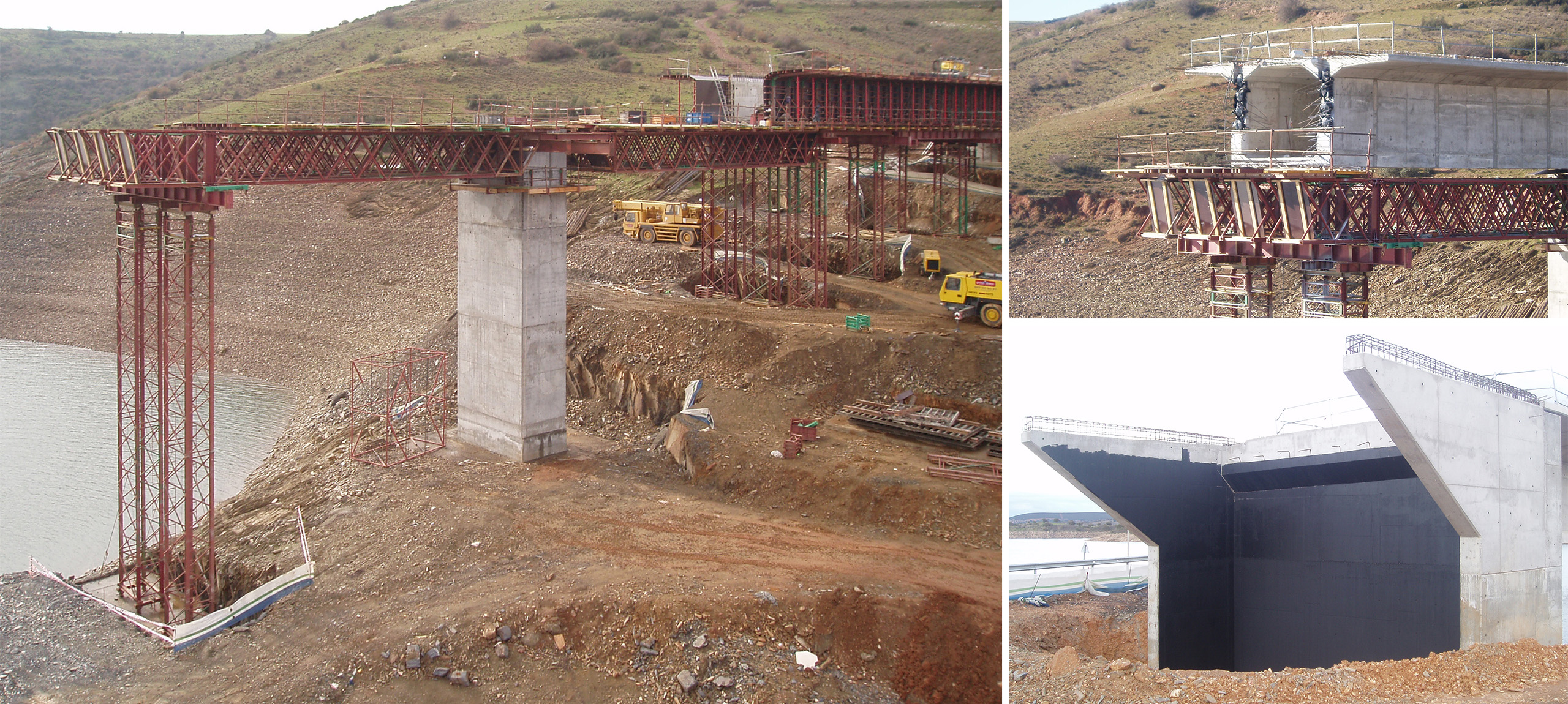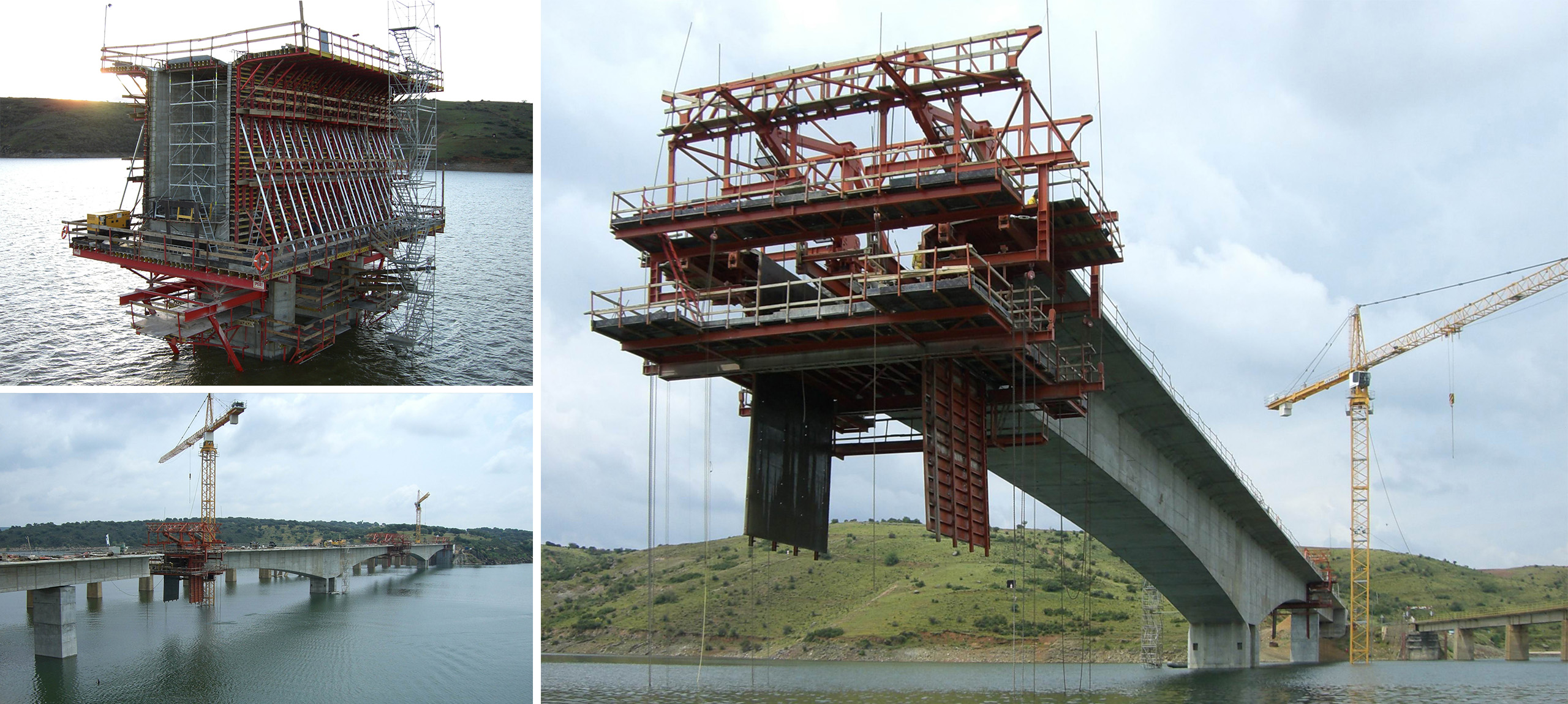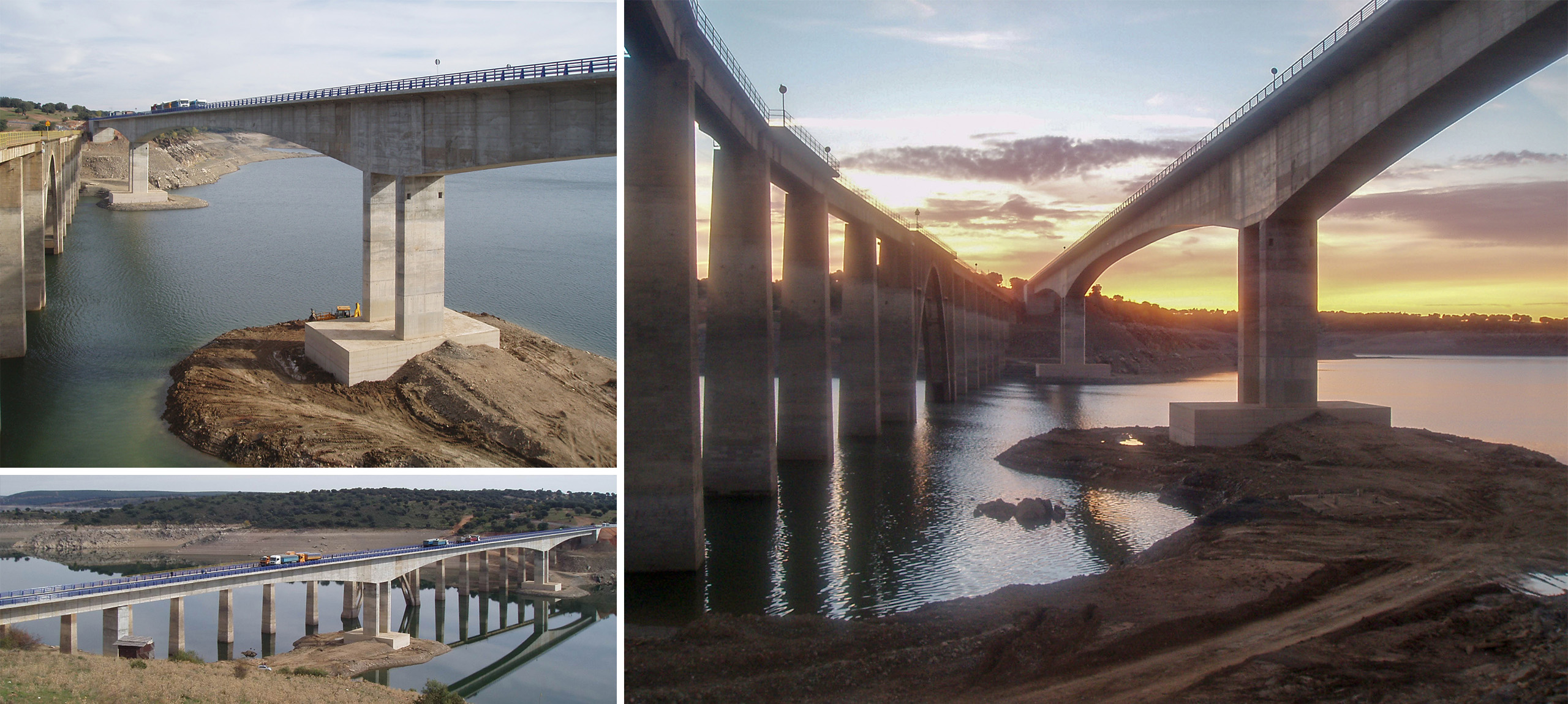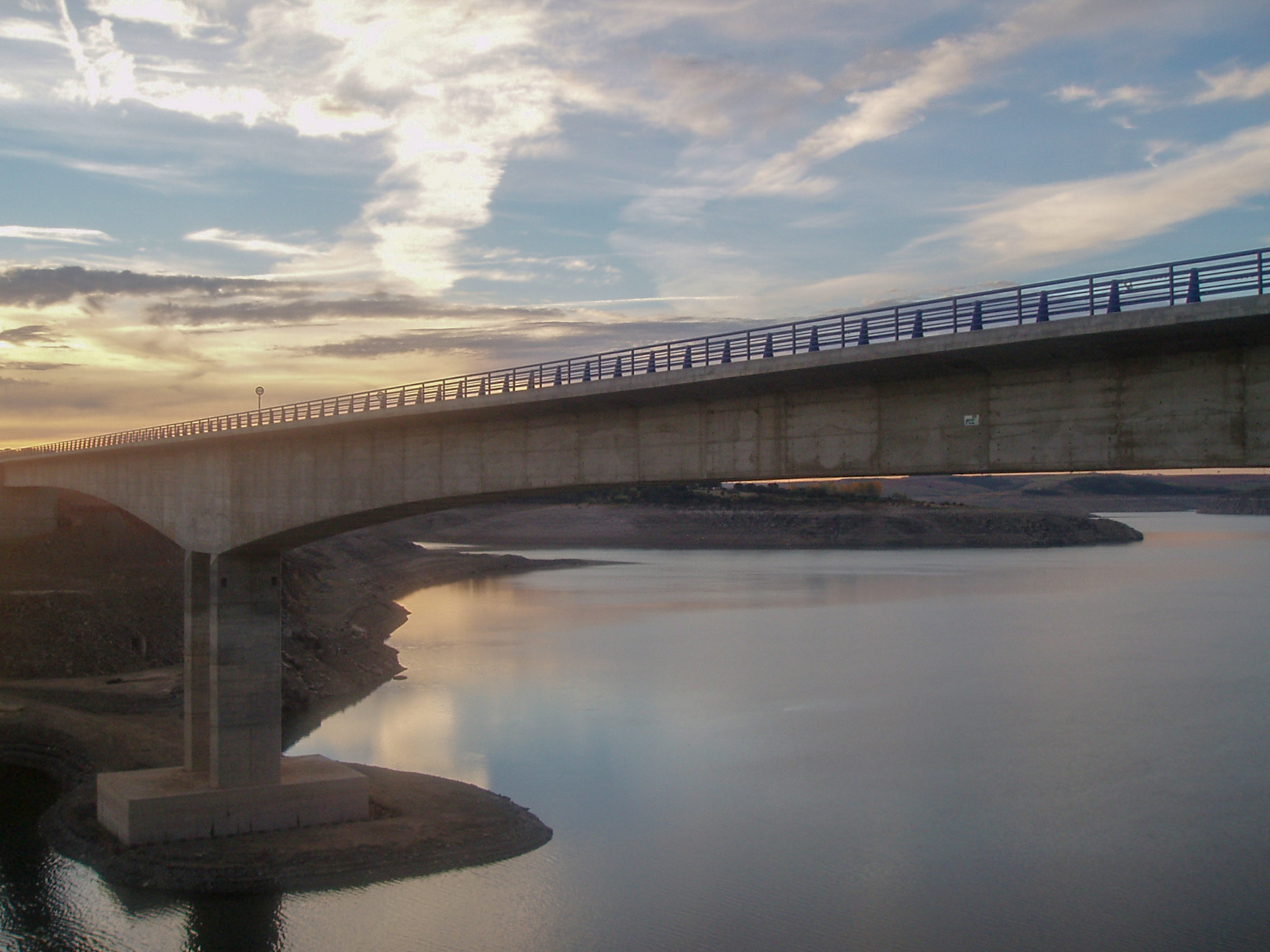
| New Manzanal del Barco Bridge | |
| Embalse de Ricobayo, Zamora, España | |
| Structural typology | Road & Highway Bridges |
| Date | Dezember, 2009 |
| Umfang | Detailed design and construction support |
| Owner | diputación de zamora |
The existing Manzanal del Barco Bridge was built in 1935 to replace an older 1927 bridge which had been submerged in the reservoir after the construction of the Ricobayo Dam. The bridge has a 50.0m span central arch, and eight 25.0m approach spans from each shore. The 3.40m deck width causes traffic problems and widening proposals were initially rejected in a preliminary stage.
The final project corresponds to Proposal II of the preliminary bid stage. Proposal I was a 430.0m long cable-stayed bridge, with a 295.0m main span.
The to-be constructed bridge will be a 479.25 m long, prestressed concrete bridge, executed employing the balanced cantilever construction method. The bridge is divided into four spans 61.25m+114m+190m+114m. The cross section depth varies parabolically between 9.50m over the piers in the main span (L/20) and 3.80m at the central area of the main span (L/50). In span 1 the depth is a constant 3.80m. The deck is 11.00m wide.
The box-girder has vertical webs and the cantilevers are ¼ the deck width. The upper slab tapers transversely, from a minimum of 0.20m at its edge to a maximum of 0.35m at the end of the cantilever with its connection to the box-girder.
The depth of the slab reduces to 0.22m at the centre of the deck. The depth of bottom slab tapers longitudinally between 0.30m and 1.00m.
The final project corresponds to Proposal II of the preliminary bid stage. Proposal I was a 430.0m long cable-stayed bridge, with a 295.0m main span.
The to-be constructed bridge will be a 479.25 m long, prestressed concrete bridge, executed employing the balanced cantilever construction method. The bridge is divided into four spans 61.25m+114m+190m+114m. The cross section depth varies parabolically between 9.50m over the piers in the main span (L/20) and 3.80m at the central area of the main span (L/50). In span 1 the depth is a constant 3.80m. The deck is 11.00m wide.
The box-girder has vertical webs and the cantilevers are ¼ the deck width. The upper slab tapers transversely, from a minimum of 0.20m at its edge to a maximum of 0.35m at the end of the cantilever with its connection to the box-girder.
The depth of the slab reduces to 0.22m at the centre of the deck. The depth of bottom slab tapers longitudinally between 0.30m and 1.00m.


